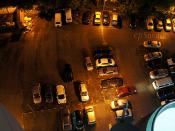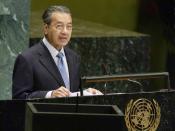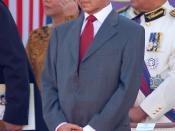Leadership case study: Mahathir Mohamed of Malaysia
Dr Mahateer was born in 1925. During World War II, he sold pisang goreng (banana fritters) to supplement his family income in the Japanese occupation of Malaya (http://en.wikipedia.org/wiki/Mahathir)1. And since very early stage of his career he took part in many Unionit organisations. He later quit working as a Docotr in state office, and established his own practian clinic. He joint Polotical movements, and parties, and win a seat in the Parliament.
Prior to becoming Prime Mister of Malaysia he rote a book called " The Malay Dilemma " this book was banned, and only allowed to be available to the public, once himself became Prime Minister. Mahathir is also known to be a very outspoken diplomat both on the national and international stage. He has been a very aggressive proponent of "Asian values"
During his term in office, Mahathir turned Malaysia into a regional high-tech manufacturing, financial, and telecommunications hub through his economic policies based on corporate nationalism, known as the various "Malaysia Plans" which set out the government middle-term objectives.
These policies remained in effect almost to the end of his tenure in office. He was a Visionary, and Transformational leader than Acharamatic. He iniated many Mega projects to transfrom the stuggling economy of the country to one that is closer to a developed world. He sent many Malasian to western universites in USA, UK, and Austoralia making malayain studenst third largest umber of forgen students undertraking higher education in western universities after China, and India.
Mahathir is credited with spearheading the phenomenal growth of the Malaysian economy, now one of the largest and most powerful in South East Asia. Growth between 1988 and 1997 averaged over ten percent and living standards rose twenty-fold, with poverty almost eradicated and social indicators...



Excellent
I really loved this. You really captured my interest in this subject. Great Job!
1 out of 1 people found this comment useful.